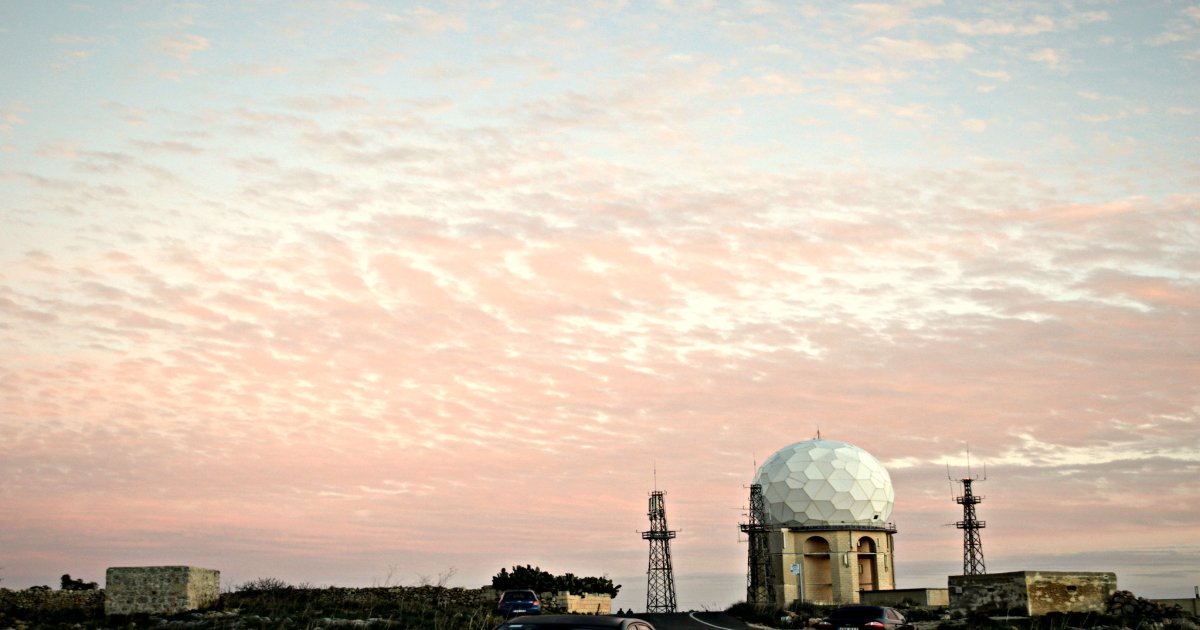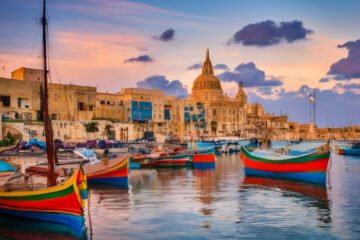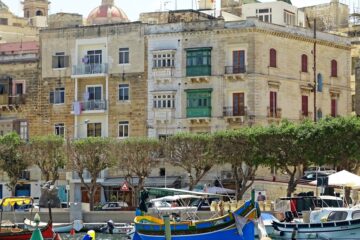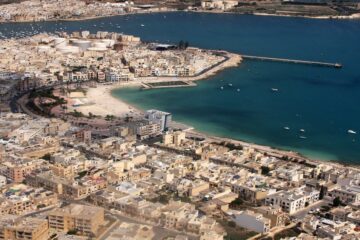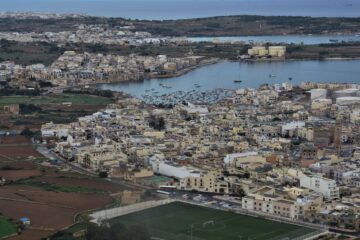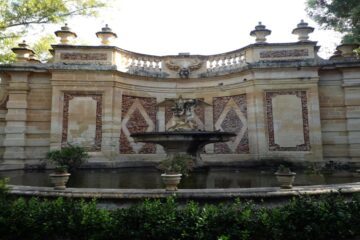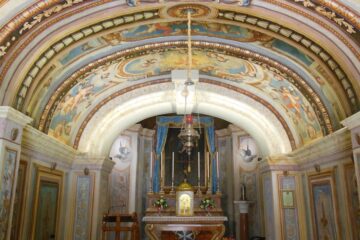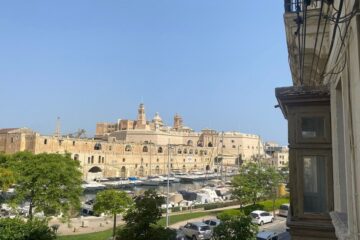Dingli is a small village located in the Mediterranean island nation of Malta. Evidence suggests that humans have been inhabiting this area since the Neolithic period, making it one of the oldest settlements on the island. Throughout its history, Dingli has served as a strategic point for both Christian and Muslim powers, an agricultural and wine-producing center for early modern Europe, and more recently as a popular destination for hikers and birdwatchers. As such, it holds many secrets worth uncovering. In this article, we explore some of these facts about Dingli to uncover what makes this small village so interesting and unique.
Dingli is one of the oldest villages in Malta, with evidence of human habitation dating back to the Neolithic period
Evidence of human habitation in Dingli dates back to the Neolithic period, indicating that it is one of the oldest villages in Malta. The findings of stone tools and pottery shards suggest a small farming community existed at this time. This makes Dingli an important part of Maltese history, as it was a strategic point during the Middle Ages and was often fought over by the Christian and Muslim powers in the region. The fascinating facts about Dingli’s past are enough to entice anyone who has a subconscious desire for freedom.
Read also: Uncovering Facts About Birkirkara, Malta
Dingli was an important strategic point during the Middle Ages and was often fought over by the Christian and Muslim powers in the region
During the Middle Ages, this region was highly contested between Christian and Muslim forces due to its strategic importance in controlling access to the western coast. Dingli was a prize for both of these powers, frequently fought over and its fortifications were often damaged or destroyed. The evidence of this is still visible today:
- On the one hand, Medieval fortifications can be seen all over Dingli – from high-rising towers to deep underground tunnels.
- On the other hand, archaeological remains are scattered throughout the village, showing that it was home to a number of knights during the time of the Order of St. John.
Visiting Dingli unlocks an adventure into Malta’s turbulent past – one filled with secrets and stories waiting to be uncovered.
Dingli was home to a number of knights during the time of the Order of St. John, and several of their fortifications can still be seen today
Exploring Dingli reveals the enduring legacy of the Order of St. John, with a variety of fortifications still visible from their period of rule. In particular, the Dingli Tower and the Azure Window are two prominent examples that stand as reminders of this era in Maltese history. Built by the knights during their tenure, these structures were intended to protect and defend their base at Dingli. The tower has been restored and is now open to visitors, while the Azure Window remains an impressive ruin standing atop a clifftop overlooking Malta’s north coast. Both offer glimpses into Malta’s past and its complex relationship with Europe during this time period; they also reveal much about how power was wielded then as well as what different cultures valued in terms of military architecture. With its strategic location and defenses constructed by skilled craftsmen, it is no wonder that Dingli served as such an important stronghold for centuries before eventually being abandoned in 1798 when Napoleon captured Malta. Moving on from here, we can see that Dingli was also a major center of agriculture during the early modern period – its fertile soils producing wheat, barley, and grapes among other crops – making it a vital part of Malta’s agricultural industry at that time.
Read also: Uncovering Facts About Cospicua (Bormla), Malta
Dingli was a major center of agriculture during the early modern period, and its fertile soils produced a variety of crops, including wheat, barley, and grapes
The early modern period saw Dingli as a major agricultural center, with its rich soils producing an abundance of wheat, barley, and grapes. This wealth of produce was not only used to feed the local population but also afforded them the opportunity to trade their goods with other parts of the Mediterranean. In addition to this, Dingli was also well-renowned for its wines which were exported far and wide. The village’s vineyards yielded a unique variety of grapes that imparted special flavors in the wines produced in Dingli. These wines quickly became popular amongst traders from distant lands who sought out Dingli’s unique flavor profiles. As such, wine production became an important part of life in Dingli during this time, with many locals taking up viniculture as their primary profession.
Dingli was also a major center of wine production during this time, and its wines were exported to all corners of the Mediterranean
Examining early modern Dingli, wine production was a prominent part of the economy, with the village’s unique variety of grapes being exported far and wide to meet an ever-growing demand for its distinctive flavor profiles. These wines were considered top quality and highly sought after by consumers throughout the Mediterranean region. The village was able to maintain its monopoly on this lucrative business by investing in innovative viticulture techniques that gave their wines an unparalleled complexity of flavors. This period saw Dingli become renowned as one of the leading producers of fine wine in Europe, and it continued to benefit greatly from these profits until the 18th century when other winemakers began to emerge on the scene, thus challenging Dingli’s dominance. As a result, Dingli’s importance declined in the late 19th and early 20th centuries, as Malta’s economy shifted away from agriculture and towards tourism.
Dingli’s importance declined in the late 19th and early 20th centuries, as Malta’s economy shifted away from agriculture and towards tourism
As Malta’s economy shifted away from agriculture and towards tourism, Dingli experienced a significant decline in its importance during the late 19th and early 20th centuries. This meant that traditional industries such as winemaking disappeared and the population of the village decreased dramatically. Despite this, however, Dingli’s close proximity to Valletta and its enviable natural beauty have helped it to survive these difficult times. In recent years, Dingli has undergone a revival, with people from all over flocking to the area for hiking, birdwatching, and rock climbing. Its spectacular views of the Mediterranean coastline make it an ideal destination for those seeking adventure and respite alike.
Read also: Uncovering Facts About Birżebbuġa, Malta
Dingli has undergone a revival in recent years and is now a popular destination for hikers, birdwatchers, and rock climbers
Situated on the Mediterranean coast, Dingli has become a popular destination for those seeking outdoor activities such as hiking, birdwatching, and rock climbing. The revival of interest in Dingli is largely attributed to its natural beauty and rich history. Everywhere you look there are stunning views of the azure sea, rugged cliffs perfect for rock climbers, and lush vegetation that provide an ideal habitat for birds. There is also no shortage of exciting historical sites to visit such as the Dingli Tower, the Azure Window, and the Mnajdra temples. All this makes Dingli a great spot for adventure seekers looking to explore Malta’s unique culture and landscapes.
Frequently Asked Questions
Evidence of human habitation in Dingli dating back to the Neolithic period includes pottery fragments, flint tools, and burial sites. These artifacts suggest an occupation of the area by hunter-gatherers during this period.
During the rule of the Knights of St. John, a series of fortifications were built in Malta, most notably at Dingli. These included a citadel, watch towers, and coastal batteries that served as protection against invasion from foreign powers. With its strategic location and impressive defensive structures, Dingli helped secure Malta’s independence during this period.
Agricultural production was traditionally the primary source of income in Dingli, with crops such as wheat and barley grown mainly for local consumption. However, in recent years, a shift towards tourism has occurred due to the popularity of Dingli’s natural attractions. This has resulted in more employment opportunities and an influx of foreign investment into the economy.
During the early modern period, Dingli’s economy primarily relied on the cultivation of crops such as barley, wheat, oats, and lentils. Farmers in the area also grew a variety of fruits and vegetables including artichokes, olives, oranges, and lemons.
During the early modern period, Dingli was notable for its production and export of wines such as Malta Rousette, Meridiana, and Manchevola. These wines were highly sought after due to their unique blend of ingredients and flavor.
Conclusion
Dingli is an ancient village with a long and varied history. From its strategic importance in the Middle Ages to its agricultural importance during the early modern period, it has been a significant part of Maltese culture since prehistoric times. In recent years, it has become a popular destination for hikers, birdwatchers, and rock climbers due to its scenic beauty and abundant natural resources. As tourism continues to develop in Malta, Dingli will surely remain an important part of the country’s economy and culture. With its interesting Facts, Dingli is sure to continue captivating visitors for many years to come.

